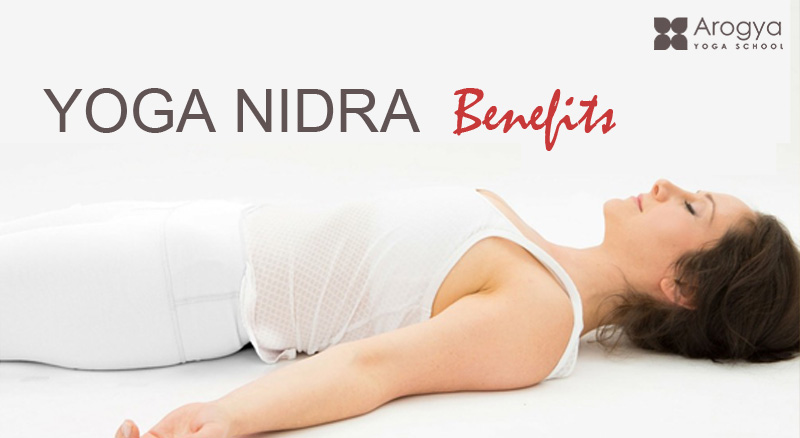
Yoga Nidra is a state where the person is not fully asleep or fully awake. A state characterized by a sensation of drowsy consciousness exists.With a relaxed body, the Yogi follows verbal instructions. This helps them become aware of their inner self in a steady and efficient way.
Define Yoga Nidra
The Yogi stays in Pratyahara, which means withdrawing their senses. In this state, only their hearing stays connected to the instructions given.
Yoga Nidra connects the internal self with the external world. This helps the Yogi relax deeply. This practice is useful for reducing anxiety and stress in just a few minutes. War veterans, soldiers, crime victims, and people with chronic anxiety have greatly benefited from Yoga Nidra.
Yoga Nidra – Sanskrit Meaning
Yoga Nidra (yog Nidraa) is an Sanskrit term composed by two phrases:
- Yoga (yog) – means union, discipline, or spiritual practice. In this sense it refers to the practice of consciousness and connection to the inner self.
- Nidra (nidraa) – means sleep.
Yoga Nidra English Meaning
Yoga Nidra also referred to as yoga sleep is a potent practice of guided mindfulness practice that can lead to a state of complete rest but allowing you to remain conscious. It’s a type of emotional, mental and physical relaxation that is more restorative than normal sleep.
Yoga Nidra Meaning
The word the term Yoga Nidra originates of two Sanskrit words: Yoga, meaning integration or union in addition to Nidra which means sleep. But, Yoga Nidra is not about falling asleep, but is about achieving an euphoric state with full awareness.
When you practice it in a position of lying down usually during Savasana (Corpse Pose), Yoga Nidra uses specific instructions that guide the user through the layers of physical, emotional, and mental awareness.
Yoga nidra Asana, or Yogic Sleep Pose, is a special forward bend. It deeply opens the hips and resembles lying back in a straight position. The name comes from the yogic state of sleep called “Yoga Nidra.” This is because the final pose brings inner focus and a sense of calm.
How to Do Yoganidrasana – Conscious Awareness
NOTE: This is an advanced pose. Only try it after a good warm-up and with a skilled instructor’s help.
- Lying in a reclined position with legs extending and your arms resting on your back.
- Next, raise your legs and draw your knees towards your chest.
- Position both legs over your shoulders—sliding each leg individually behind your neck or shoulders (similar to putting on a backpack).
- Bring your feet together in front of your neck, at the back (if you can manage it).
- Subsequently, encircle your arms around your legs by looping them under the knees, then interlock your hands behind your back.
- Relax your neck and head and allow the spine to stretch and the breath to slow.
- The pose should be held to take a few seconds and then focus on your inner peace and letting go.

10 yoga nidra benefits
- Mitigates sleep disorders like insomnia and restlessness, promoting healthier sleeping patterns.
- Strengthens the autonomic nervous system, enhancing mental clarity and learning capabilities.
- Releases a positive aura that effectively tackles conditions like depression and anxiety.
- Relieves pressure from the coronary system when incorporated into a routine.
- Produces delta waves (1-4 hertz) that create neural pathways for healthier thoughts and habits.
- Curbs stress and reduces chronic pain, aiding in trauma healing.
- Fights symptoms of type 2 diabetes and manages hypertension, ulcers, digestive disorders, and asthma.
- One 45-minute session is equivalent to 3 hours of deep sleep, with immediate overall improvement.
- Facilitates internal connection with the self, promoting self-awareness.
- Accessible meditation practice that cultivates multiple levels of well-being, leading to peace in a short time.
- Yoga Nidra can help reduce stress and chronic pain. It can also heal trauma and fight symptoms of type 2 diabetes. Additionally, it helps manage hypertension, ulcers, digestive disorders, and asthma, among other health issues.
- Relax Your mind and body, Connect internally with the self.
- Yoga Nidra is an accessible meditation practice that focuses on cultivating multiple levels of well-being. Practiced with consistency and awareness, you may likely discover that you can find a good amount of peace in a short period.
Yoga Nidra Meditation – A Deep Relaxation Practice
yoga Nidra commonly referred to yoga sleep is a highly effective method of meditation that lets the body unwind while the mind is focused and alert. It brings you to an equilibrium between sleep and sleep, encouraging deep relaxation and revitalization.
What is Yoga Nidra Meditation?
Yoga Nidra can be described as a kind of meditation that is practiced in a position of lying down, during which a instructor or audio guide guides you through an assortment of body scans, breath awareness affirmations and visualizations. It’s akin to a mindful nap which leaves you feeling rejuvenated and calm.
Yoga Nidra Meditation Technique
Step-by-step instruction for deep relaxation, and inner awareness
Yoga Nidra or yogic sleeping is a potent meditation technique that puts you in an intense state of physical, mental and emotional calm. Although it is similar to sleep however, your brain remains alert and awake throughout the entire practice.
Steps of a Typical Yoga Nidra Session
- Preparation Lay down on your back in Savasana (corpse position) close your eyes and let your body be still.
- Setting an intention (Sankalpa) – Mentally make a mental note of a personal intention or affirmation.
- The Body Scans The instructor assists the student in focusing on different areas of the body in order to create physical relaxation.
- Breath Awareness You should focus upon the rhythmic nature of your breathing to relax your mind.
- Sensory Exploration You might be asked to experience other sensations, such as heaviness or lightness.
- Visualization Visualization guided to tap into your subconscious.
- Return and awakening Slowly return to your full consciousness you will feel relaxed and refreshed.
Benefits of Yoga Nidra Meditation
- Deep relaxation of the body and mind.
- Reduction in stress and anxiety
- Sleep better and less insomnia
- Healing of the emotional and physical body, as well as release of trauma
- Improved clarity and creativity
- More self-awareness and inner peace
If you’re interested in learning more about the Yog Nidra technique and its seven stages, consider enrolling in our Yog Nidra – Yoga Teacher Training in Rishikesh.




